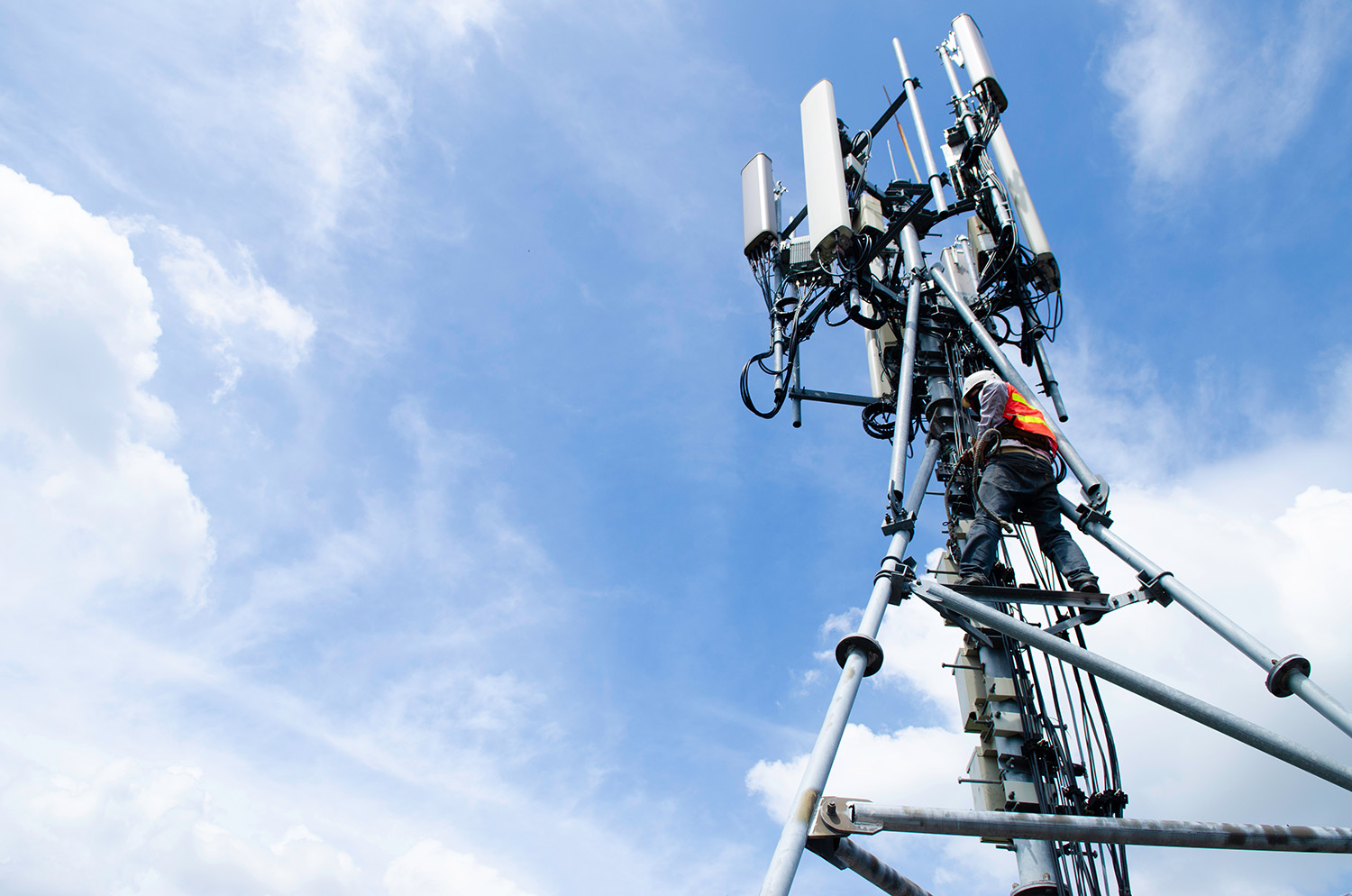Behind the antennas that we see on roofs and pylons lies a complex universe: the mobile network. This massive technological orchestra, composed of hardware and software, works together harmoniously to provide us with the best connectivity experience.
This orchestra has two main layers, each providing a set of features to ensure end-to-end connectivity. These two layers are:
- The radio access layer. This is the entry point for users. It enables communication between mobile phones and the mobile operator’s radio antennas. These antennas, installed on base stations called gNodeB for 5G, are geographically dispersed to provide radio coverage in the form of cells (hence the term “cellular networks” in reference to mobile networks). These base stations continuously transmit messages containing the information required to connect the user devices to the network. Upon receiving these messages, the user device composes a network connection request message, containing information on the device and the authentication information embedded in the SIM card. This message is then sent to the core layer for processing and the decision as to whether or not the user should be authorized to access the network. In the case of authorization, this radio layer will serve as a radio relay connecting the user and the mobile network.
- The core layer: a true orchestra of functions that manage all the features involved in providing connectivity. This includes management of user identities (authentication and identification of each device on the network), management of user mobility (change of the access point antenna to the network when users move), the routing of packets (routing data packets to their final destinations, such as the internet), management of the quality of service (guaranteeing an optimal, customized experience for each user), policy management (application of the rules defined by the operator: rates, security, etc.) and billing each user (tracking and billing the usage of each user).
Generation after generation: the mobile network saga
Mobile networks transform every 10 years or so as they enter a new technological era, marked by the unveiling of a new “G” generation. 2G marked the advent of digital cellular networks, enabling voice and SMS transmission. 3G then paved the way for new services such as instant messaging, video games and video calling. 4G, on the other hand, has taken connectivity to the next level, allowing users to fully enjoy advanced multimedia applications and video streaming services.
5G is designed to offer extremely fast data transmission speeds, which are perfect for streaming high-resolution video and using virtual or augmented reality. It also aims to support a multitude of connected devices, especially for the Internet of things (IoT) and industrial applications. In addition, it is designed to minimize communication delays (latencies), which is essential for uses that depend on real-time interaction, such as remote surgery and autonomous vehicle navigation.
Legacy cellular network architecture: centralization and its limitations
Throughout the development of core mobile network technology across generations, the centralized architectural model has been maintained since 2G. This means that the various core network features are concentrated in core components.
While this model is cost, management, and maintenance efficient, it also has limitations that prevent it from reaping the full benefits of 5G, particularly because of single points of failure and the challenge of managing a large number of network elements. Network densification, an essential mechanism for 5G, requires a different approach.
One promising path towards overcoming these limitations and improving mobile networks is to modify the existing architecture to allow for better scalability, i.e. to make the network capable of serving a growing number of users without any loss of performance. This could be crucial for major sports and cultural events, for example.
Decentralization could also foster collaboration between telecommunications and industry stakeholders, thus paving the way for new services such as private 5G networks. It also improves network resilience by eliminating single points of failure and drives innovation by allowing new participants to join the network.
Exploring the decentralization of mobile networks
In my work, I examine the potential contribution of decentralized technologies, such as blockchain, to improving mobile networks. This involves rethinking the current network architecture. Like an orchestra learning to play without a conductor, it is a significant yet achievable challenge. To this end, I am developing a prototype mobile network using software and open-source components.
At the same time, I am exploring the use of decentralized architecture that would allow for a multi-tenant network in which various stakeholders could manage different sections without compromising network security or performance, while guaranteeing the users’ data privacy. When designing this type of architecture, it is crucial to consider the various network components including mobility, invoicing users, and monitoring the quality of service provided to them.
In short, legacy cellular network architecture based on centralized models has served as the foundation for mobile connectivity for years. Yet its limitations are becoming increasingly apparent in light of ever-changing needs. The future of mobile networks lies in decentralized architecture that will offer more efficient connectivity adapted to new uses.
While 5G offers various advantages and new performance levels for innovative use cases, it also has disadvantages such as the high cost of deployment. Rethinking the architecture of cellular networks will therefore be the key to finding optimal deployment methods.
This article was published in partnership with Orange Innovation laboratory.
Meroua Moussaoui, PhD student in networks and telecommunications, Telecom SudParis – Institut Mines-Télécom
This article has been republished from The Conversation under a Creative Commons license.






